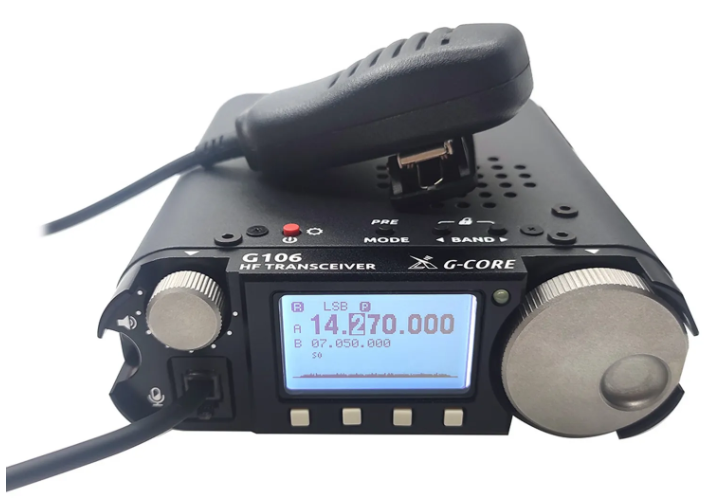
Send Inquiry
How Do We Understand Ham Radio Jargon?
The Origins and Importance of Ham Radio Jargon
Ham radio jargon traces its roots back to the early days of telegraphy and Morse code in the mid-19th century. As ham radio evolved, enthusiasts developed their own unique terminology to facilitate communication and streamline operations. This specialized language, filled with abbreviations and codes, serves as a common thread connecting radio operators worldwide.
Understanding ham radio jargon is more than just mastering technical terms; it's about fostering camaraderie and efficiency within the community. Whether you're participating in casual conversations or emergency communications, being fluent in ham radio jargon enhances your ability to convey messages clearly and concisely.
Over time, ham radio jargon has adapted to incorporate modern technology and practices. While traditional Morse code remains a fundamental aspect of ham radio, contemporary terminology reflects advancements in equipment, modes of communication, and regulatory standards. By embracing these updates, operators ensure the continued relevance and effectiveness of ham radio in the digital age.
Essential Ham Radio Terms Explained
Understanding key terms is essential for navigating the world of ham radio effectively. Let's break down some of the most important terms you'll encounter:
- Elmer: In ham radio slang, an "Elmer" refers to a mentor who guides newcomers through the hobby, offering advice and support on various aspects such as operating procedures, technical knowledge, and antenna setup.
- Transceiver: A combination of "transmitter" and "receiver," a transceiver is a device used in ham radio that can both send and receive radio signals. It serves as the central component of a ham radio station, allowing operators to communicate with others over the airwaves.
- Morse Code: A method of encoding text characters as sequences of dots and dashes, Morse code has been a cornerstone of ham radio communication since its inception. Learning Morse code opens up a world of long-distance communication opportunities and is still widely used among ham radio enthusiasts today.
Knowing equipment terms like "receiver" and "transmitter" is crucial for understanding how ham radio stations function. A receiver is a device that picks up incoming radio signals, allowing operators to listen to transmissions from other stations. In contrast, a transmitter is used to send out radio signals, enabling operators to communicate with others over the airwaves.
Antennas and cables play a vital role in ham radio communication, allowing operators to transmit and receive signals effectively. Commonly used terms include "coaxial cable," which is used to connect radios to antennas, "dipole," a type of antenna configuration, "vertical," a type of antenna orientation, and "yagi," a directional antenna design.
Mastering Communication in Ham Radio
Effective communication is at the heart of ham radio. Let's explore some key concepts and practices that will help you become a proficient operator:
- CQ: The term "CQ" is used to initiate a call for communication. When you hear someone say "CQ," it means they are looking to make contact with other stations and engage in a conversation. Responding to a CQ call is a common way to start a QSO (conversation) in ham radio.
- DX Communication: "DX" refers to long-distance communication, often involving contacts with stations located in distant countries or regions. Achieving the DXCC Award is a significant milestone for ham radio operators, recognizing confirmed contacts with 100 or more countries.
- Q Codes: Q codes are shorthand communication protocols used in ham radio to convey messages quickly and efficiently. Examples include QRP (low power), QTH (location), and QSY (changing frequency). Familiarizing yourself with Q codes will streamline your on-air communications and enhance your overall experience as a ham radio operator.
- Sign-off Codes: The codes "73" and "88" are commonly used to sign off or close a conversation in ham radio. "73" is shorthand for "best regards," while "88" signifies "love and kisses." These codes reflect the friendly and respectful nature of ham radio communication and are exchanged as a gesture of goodwill between operators.
Morse Code and Its Role in Ham Radio
Morse code holds a significant place in the history and practice of ham radio.
Historical Importance
Developed in the early 19th century by Samuel Morse, Morse code became the primary means of communication over long distances via telegraph systems. In the realm of ham radio, Morse code was one of the earliest modes of communication and remains an integral part of the hobby's heritage.
Types of Morse Code Keys
Morse code keys come in various forms, each with its unique design and function. Traditional "straight keys" require operators to manually press a lever to create dots and dashes, while modern "paddles" offer a more ergonomic and efficient way to generate Morse code signals. These keys enable operators to transmit messages using Morse code with precision and accuracy.
Integration in Modern Communication
Despite advancements in technology, Morse code continues to play a vital role in modern ham radio communication. Many operators still prefer Morse code for its simplicity, reliability, and ability to penetrate challenging propagation conditions. Additionally, Morse code proficiency remains a requirement for certain amateur radio licenses, ensuring its relevance in contemporary ham radio practice.
The Role of Ham Radio in Safety and Emergencies
Ham radio serves as a lifeline during emergencies, providing reliable communication when other methods fail.
Introduction to S.O.S. Signal
The universally recognized distress signal, S.O.S. , is a fundamental component of ham radio emergency communication. Morse code's simplicity and effectiveness make it an ideal means of signaling for help in critical situations, both on land and at sea.
Highlighting Emergency Communication
During disasters and emergencies, ham radio operators volunteer their skills and equipment to assist with communication efforts. Whether it's coordinating rescue operations, relaying vital information, or providing emotional support, ham radio plays a crucial role in ensuring the safety and well-being of affected communities.
Recognition of Global Importance
The widespread use of ham radio in emergency response has earned it recognition as a valuable asset in global communication infrastructure. Governments, organizations, and individuals alike acknowledge the unique capabilities of ham radio to maintain communication resilience in times of crisis, making it an indispensable tool for disaster preparedness and response worldwide.
Conclusion
Mastery of ham radio terminology facilitates clear and effective communication, enabling operators to participate in conversations, make meaningful connections, and contribute to the community.
As you embark on your ham radio journey, investing in reliable equipment is key to your success and enjoyment. That's why we proudly recommend Ruixue's Ham Radio gear. With a reputation for excellence and innovation, Ruixue offers a range of high-quality transceivers, antennas, and accessories designed to meet the needs of amateur radio operators of all skill levels.
By choosing Ruixue, you're not just purchasing equipment; you're investing in reliability, performance, and support that will enhance your ham radio experience for years to come. So, why wait? Explore Ruixue's lineup today and elevate your ham radio adventures to new heights.

